Q
How long does a 2019 Kia Optima last?
The 2019 Kia Optima, when driven normally and serviced regularly here in Malaysia, can typically clock up 200,000 to 300,000 kilometers or even more. Its actual lifespan really hinges on things like driving habits, how often you service it, and the road conditions it's subjected to. The Optima has built a solid reputation around its dependable powertrains – think the 2.0L and 2.4L naturally aspirated engines, as well as the 1.6L turbo. Paired with a 6-speed automatic gearbox, this setup is well-tuned and known to hold up nicely over time.
To keep your Optima running strong for the long haul, I'd recommend sticking to a regular service schedule – aim for every 6 months or 5,000 to 10,000 kilometers, whichever comes first. That should include the usual suspects: oil and filter changes, checking the brakes, and inspecting the tires. Malaysia's tropical climate can be tough on batteries and rubber components, so keeping an eye on those is extra important to prevent premature wear.
Another pro tip: using genuine parts and strictly following the manufacturer's service manual can make a world of difference in keeping the car reliable. Do all that, and the Optima won't just last; it'll maintain that nice driving feel too. It's a solid mid-size sedan that offers great bang for your buck. If you're in the market for a used Optima, definitely dig into the service records and vehicle history to make sure you're getting one that's been well looked after.
Special Disclaimer: This content is published by users and does not represent the views or position of PCauto.
Related Q&A
Q
Are 2019 Kias reliable?
The 2019 Kia models are generally above average when it comes to reliability, especially popular SUVs like the Sportage and Sorento, which have built up a solid reputation in the Malaysian market. Their powertrains, such as the 2.0L and 2.4L naturally aspirated engines, are pretty well-proven tech, and maintenance costs are relatively reasonable, making them a good fit for local road conditions and climate. That said, some owners have mentioned occasional minor niggles with electronics—think touchscreen glitches or sensor hiccups—so it’s definitely worth getting a professional inspection before buying to check the car’s condition.
One thing that stands out is that most 2019 Kia models come equipped with smart safety features like lane keep assist and automatic emergency braking, which is a nice plus for this price bracket. For Malaysian consumers, regular maintenance is a must, especially since the tropical climate can take a toll on rubber components and cooling systems. Sticking with authorized dealerships or certified service centers will go a long way in keeping the vehicle in good shape. If you’re looking at a used model, prioritize ones with a complete service history and make sure to check for any flood damage—these details really matter for long-term reliability.
Q
What is the 2019 Kia engine lawsuit?
The 2019 Kia engine lawsuit primarily targeted Theta II GDI engines found in select 2011-2019 model-year vehicles sold in the U.S. market. The legal action alleged these engines might have a defect that could lead to unexpected stalling or even fire risks. In response, Kia rolled out related recalls and extended warranty programs to address the issues. For Malaysian consumers, while this lawsuit was mainly focused on the North American market, understanding international automotive recall mechanisms still holds value. After all, cars are global products, and manufacturers typically take corresponding measures across different markets based on technical investigation findings. If Malaysian Kia owners have concerns about their vehicle's condition, it's advisable to check their car's VIN through official channels to see if it falls under any technical campaigns. Additionally, following the manufacturer's recommended regular maintenance schedule is an effective way to prevent potential problems. It's worth noting that the Hyundai Motor Group (which includes Kia) has continued to invest heavily in engine technology in recent years. Their new Smartstream engine lineup has incorporated more reliability improvements, demonstrating the manufacturer's commitment to technical optimization.
Q
Is Kia Korean or Japanese?
Kia, a South Korean automotive brand founded in 1944 and headquartered in Seoul, is now a subsidiary of the Hyundai Motor Group, together forming the twin pillars of South Korea's automotive industry alongside Hyundai. Kia's vehicle lineup spans sedans, SUVs, MPVs, and electric vehicles, characterized by youthful design aesthetics and feature-packed technology. In the Malaysian market, models like the Kia Carnival, Seltos, and Sportage have struck a chord with consumers, thanks to their strong value proposition and generous warranty packages – some models even come with a 5-year unlimited mileage warranty, which is a big plus.
While Japanese brands such as Toyota and Honda enjoy significant popularity in Malaysia, Kia has carved out its own niche with its distinct Korean design language and global tech offerings, including Smartstream engines and the UVO connected car system. It's worth noting that Malaysia's automotive market is diverse and open, giving consumers the freedom to choose from brands across the globe. Korean cars tend to emphasize technology and design, Japanese models are renowned for their reliability and low maintenance costs, and Kia, in particular, has been making inroads with its hybrid and electric vehicles – the EV6, for instance – gradually entering the Malaysian scene and offering fresh options for eco-conscious drivers.
Q
Are 2019 Kia Optima good cars?
The 2019 Kia Optima is a solid contender in Malaysia's midsize sedan market, winning over many buyers with its well-rounded performance, comfortable ride, and generous equipment list. Under the hood, you'll find 2.0L and 2.4L naturally aspirated engines that deliver smooth power – perfect for city driving – while also returning decent fuel economy, which lines up nicely with what Malaysian drivers look for in a daily runabout.
Inside, the Optima goes for a clean, functional design. The center console features an 8-inch touchscreen with Apple CarPlay and Android Auto, giving it a good tech vibe. Safety-wise, it's kitted out with six airbags, stability control, and a reverse camera, offering peace of mind on the road.
The suspension is tuned more for comfort, doing a great job of soaking up bumps and irregularities, which is handy given Malaysia's varied road conditions. Now, it's worth noting that the Optima might not hold its value as well as some Japanese rivals in the used car market. But if you're prioritizing bang for your buck and a well-equipped interior, the 2019 Optima still makes a strong case for itself.
Kia's after-sales network in Malaysia is relatively comprehensive too, making servicing and maintenance pretty hassle-free – definitely a plus for owners.
Q
What is the recall on the 2019 Kia Optima engine?
The 2019 Kia Optima was recalled in some markets due to a potential engine issue, specifically related to manufacturing defects in the 2.4-liter Theta II GDI engine. These defects could lead to abnormal wear of internal components or insufficient oil circulation, and in extreme cases, pose a risk of engine stalling or even fire. Affected vehicles need to be taken back to the dealership for a free replacement of improved engine components or an ECU software update. Malaysian owners can check if their vehicle is included in the recall by entering their VIN on Kia Malaysia's official website, or by contacting an authorized service center directly. Such recalls are part of automakers' proactive approach to safety responsibilities. Hyundai Motor Group has implemented an extended warranty program for the Theta II engine series to enhance customer protection. It's advisable for owners to regularly check their oil condition and perform timely maintenance. If the engine warning light comes on, unusual noises occur, or there's a drop in power while driving, the vehicle should be inspected immediately. Malaysia's hot climate can add extra strain on the engine, so adhering to the original maintenance schedule and using the specified oil can effectively reduce potential risks.
Q
How much is a 2019 Kia Optima worth used?
If you're scouting for a used 2019 Kia Optima in Malaysia, you'll typically find prices ranging from around RM70,000 to RM120,000. The actual figure hinges on several factors: the car's overall condition, mileage, trim level, and service history. For instance, top-spec GT Line models or low-mileage gems might nudge closer to that upper end, while base variants or higher-mileage examples will sit more towards the lower side of the scale.
The Optima holds its own in Malaysia's pre-owned market, thanks to its comfy cabin, practical space, and well-rounded performance. The 1.6T and 2.0L engine options are particularly popular with family buyers, striking a nice balance between fuel efficiency and adequate power.
If you're looking to buy, here’s the drill: Always get a PUSPAKOM inspection to verify the mechanical health, and check the original service records to ensure there are no major accident red flags. It’s also smart to compare prices on local platforms like Carlist or Mudah to get a feel for the market. On top of that, Kia’s got a pretty solid after-sales network here, with reliable parts supply – that’s definitely a plus for keeping the resale value steady down the line.
Q
What kind of oil does a 2019 Kia Optima take?
For the 2019 Kia Optima in Malaysia, the recommended oil viscosity is 5W-20 or 5W-30 full synthetic oil that meets or exceeds API SN specifications. If your ride has a turbocharged engine, we'd lean toward 5W-30 for that extra high-temperature protection—it's worth it. Malaysia's hot and humid climate is no joke, so full synthetic oil handles the heat better and lets you stretch oil changes to around 10,000 km or 6 months, whichever comes first.
Kia Genuine Oil is obviously dialed in for the engine, but you've got options—big names like Shell Helix, Castrol Edge, or Petronas Syntium with the same specs work just fine. When you do the oil change, don't skip swapping the oil filter too (genuine is best) to keep that filtration working properly.
If your Optima's racked up over 80,000 km, think about stepping up to 5W-30 or even 5W-40 for better seal integrity—but always check the owner's manual or hit up an authorized service center first. It's all about balancing fuel economy and engine protection. And if you're regularly doing long hauls or carrying heavy loads, you might want to play it safe and shorten the interval to 7,000-8,000 km.
Q
What kind of battery does a 2019 Kia Optima take?
The 2019 Kia Optima in the Malaysian market typically comes equipped with a 12-volt lead-acid battery, most commonly the H6 (Group 48) size or a similar maintenance-free variant. Given Malaysia's tropical heat, we'd strongly recommend a cold cranking amp (CCA) rating of 650A or higher to ensure reliable starts even on scorching days. When replacing, double-check that the physical dimensions and terminal positions match the original to avoid fitment headaches. For this climate, prioritizing a battery with strong high-temperature tolerance is key – AGM (Absorbent Glass Mat) batteries are a solid upgrade here. They handle the stop-start demands and short trip duty cycles much better, maintaining stability where conventional batteries might struggle.
Malaysian Optima owners, listen up: regular battery health checks are non-negotiable. The intense heat here accelerates electrolyte evaporation and plate corrosion. Make it a habit to inspect the terminals every 6 months – keep 'em clean! Also, check the voltage; a healthy, fully charged battery should read around 12.6V. If your Optima has a smart charging system, ensure your new battery is compatible to avoid any electrical gremlins. And for those who frequently drive through heavy rain or flooded areas? A battery with superior sealing will help prevent moisture ingress and potential damage. Finally, if you're parking the car for an extended period, investing in a battery maintainer is a smart move to keep it topped up and extend its life.
Q
How much is an oil change for a 2019 Kia Optima?
For a 2019 Kia Optima in Malaysia, an oil change typically runs between RM150 and RM300. The exact price hinges on the type of oil you go for—mineral, semi-synthetic, or fully synthetic—and where you decide to get the service done. Authorized Kia service centers might charge a bit more, but you’re getting genuine parts and the peace of mind that comes with their warranty coverage. Third-party workshops, on the other hand, usually offer a more budget-friendly route.
Sure, fully synthetic oil costs more, around RM250 to RM300, but it’s a solid investment. It provides superior engine protection and lets you stretch the interval between changes to about 10,000 kilometers. Mineral oil, which sits in the RM150 to RM200 range, needs swapping out every 5,000 kilometers, so keep that in mind for long-term costs.
My advice? Pick the oil that best fits your driving style and wallet. Regular maintenance is key to keeping that engine running strong, so don’t skip those service dates. Oh, and always make sure they replace the oil filter too—you want that lubrication system clean and working at its best. And hey, the owner’s manual has all the deets on the Optima’s recommended service schedule. Sticking to Kia’s guidelines will help your car last longer and perform at its peak for years to come.
Q
Does a 2019 Kia Optima take synthetic oil?
For the 2019 Kia Optima in the Malaysian market, synthetic engine oil is the way to go. Check your owner’s manual for the exact viscosity, but you’re typically looking at 5W-20 or 5W-30. These lower-viscosity synthetics handle our tropical heat well and even give a little boost to fuel economy – always a plus.
Modern car engines, let’s be real, demand better lubrication. Full synthetic oil has basically become the standard for new rides, and it’s easy to see why: it stays stable under high temps, keeps engines cleaner, and does a killer job fighting wear. That’s especially important here in Malaysia, where the roads get hot and humid.
Pro tip: Stick to regular oil changes – aim for every 10,000 km or 6 months, whichever comes first. And don’t skimp on the oil filter; go with the OEM one to make sure it’s filtering properly. If your Optima has a turbo, full synthetic is non-negotiable – turbos run hotter, and you need that extra protection.
When picking oil, look for the API SN or SP certifications, and ACEA C2 or C3 if you can find it. These standards are key for protecting GDI engines (like the Optima’s) from issues like low-speed pre-ignition. Yeah, mineral or semi-synthetic oils might be cheaper upfront, but using them long-term could mess with your engine’s lifespan and even void your warranty. At the end of the day, following Kia’s recommendation is the safest bet for keeping your Optima running strong.
Popular Cars
Model Year
Car Compare
Car Photo
Latest Q&A
Q
How does the 2022 Odyssey compare to other minivans?
The 2022 Honda Odyssey stands out among mainstream family MPVs with several competitive advantages. Its 3.5L V6 engine delivers 280 horsepower, paired with a 10-speed automatic transmission that offers smoother shifts and better fuel efficiency than many rivals still using 6 or 8-speed gearboxes.
The magic seat design is a game-changer—the second row slides sideways up to 16 cm, while the third row folds flat with one-touch functionality, making seat reconfiguration far more flexible than conventional MPVs. Perfect for families constantly juggling cargo and passenger needs.
On the safety front, the Odyssey comes standard with Honda Sensing, including adaptive cruise control and lane-keeping assist—features that often cost extra in competing models. For entertainment, it’s equipped with a rear-seat entertainment screen and CabinTalk, solving the classic "backseat shout" problem on long trips.
A standout detail? The low floor height—12-15 cm lower than most MPVs—makes entry and exit noticeably easier for kids and elderly passengers. While many MPVs prioritize space at the expense of driving dynamics, the Odyssey’s double-wishbone rear suspension (a rarity in this segment) actually improves handling stability.
Maintenance intervals align with local habits—recommended every 10,000 km or 6 months—keeping ownership costs reasonable. All in all, it’s a thoughtful package that doesn’t force families to compromise.
Q
Is there a recall on Honda Odyssey 2022?
At present, Honda has not issued any recall notice for the 2022 Odyssey. This model has shown good overall reliability performance in the local market. However, it is recommended that car owners regularly check the latest safety notices through Honda's official website or authorized service centers, as there are occasional service activities for specific components worldwide. For example, some markets have undergone preventive maintenance for the electric tailgate control module or sliding door sensor. For the daily maintenance of MPV models, special attention should be paid to cleaning the electric sliding door tracks and updating the multimedia system software, which can affect the user experience. If any abnormal conditions are found in the vehicle, such as warning lights on the dashboard or electronic device failure prompts, it is best to contact the nearest authorized repair point for professional inspection as soon as possible, after all, the seven seater model has more complex electronic devices than ordinary sedans. In addition, it is recommended that car owners develop the habit of regularly checking the condition of the vehicle, including tire wear, brake system status, etc. These large family cars usually carry heavy loads, and the wear and tear of chassis components will be relatively faster.
Q
What should I pay for a 2022 Honda Odyssey?
The used car price of a 2022 Honda Odyssey can vary depending on its condition, mileage, trim level, and warranty coverage. Typically, you can expect prices to range between RM150,000 to RM220,000, with well-maintained, low-mileage higher-spec models leaning toward the upper end. On the other hand, base trims or those with higher mileage will be more affordable.
Before buying, it’s always a good idea to get a thorough inspection from an authorized used car dealer or a trusted seller to check for accident history and mechanical issues. The Odyssey is a popular family MPV, known for its spacious cabin, comfortable ride, and reliable performance—especially its versatile Magic Seat system and efficient powertrain, making it great for long trips.
When shopping, don’t just focus on the price—consider warranty coverage and after-sales service to avoid future headaches. If your budget allows, you might also want to explore newer models or even a brand-new unit for better features and longer warranty protection.
Q
What are common problems with the 2022 Odyssey Elite?
The 2022 Odyssey Elite delivers solid performance as a premium minivan, though some owners report recurring quirks. The infotainment system occasionally freezes or lags—particularly when using Apple CarPlay or Android Auto—often requiring a reboot to resolve. Another hiccup involves the power sliding doors' sensors misreading obstacles during wet weather, usually fixed by wiping the sensors clean.
Mechanically, a handful of drivers notice slight low-speed gearshift hesitation from the 9-speed transmission, but a dealership software tweak typically smooths it out. While the 3.5L V6 packs plenty of punch, stop-and-go traffic tanks fuel efficiency; keeping air filters and spark plugs in check helps. Honda did improve cabin quietness over the previous gen, though tire hum still reaches the third row at highway speeds—swapping to touring tires helps if you're picky about noise.
One nitpick: The Honda Sensing suite's automatic braking tends to be jumpy in crawling traffic, triggering false alerts. You can dial down its sensitivity via the touchscreen. Pro tip: Given the Odyssey's heft, brake pads wear faster—stick to 10,000-mile inspections.
Q
How long will a 2022 Honda Odyssey last?
The 2022 Honda Odyssey can typically last between 200,000 to 300,000 kilometers—or even longer—with proper maintenance and reasonable use. Its actual lifespan depends on driving habits, maintenance frequency, and road conditions.
Under the hood, the Odyssey comes with Honda’s proven 2.4L i-VTEC engine or a hybrid system, both known for their durability. Staying on top of oil changes, transmission fluid swaps, and suspension upkeep will go a long way in keeping it running smoothly. The body has solid rust protection, but if you’re near the coast, an extra undercoat wouldn’t hurt to fight off salt and humidity.
One thing to note: The hybrid’s battery pack usually lasts 8-10 years, though replacement costs have been dropping. Every 50,000 km, it’s smart to check the drivetrain and steering system, plus replace wear-and-tear parts like the timing chain when needed. Easy driving—avoiding hard acceleration and heavy loads—helps preserve the engine and transmission.
Resale value is strong for an MPV, especially with clean maintenance records. Stick to the service schedule, and most owners can get 15+ years out of it without major repairs.
View MoreRelated News

In Malaysia, which sliding door MPVs are available?
MichaelOct 30, 2025
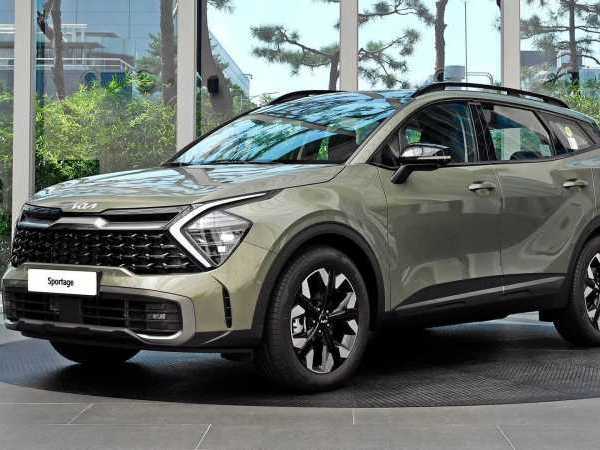
Kia Sportage: Superior Suspension for Smooth Ride
Kevin WongMay 19, 2025
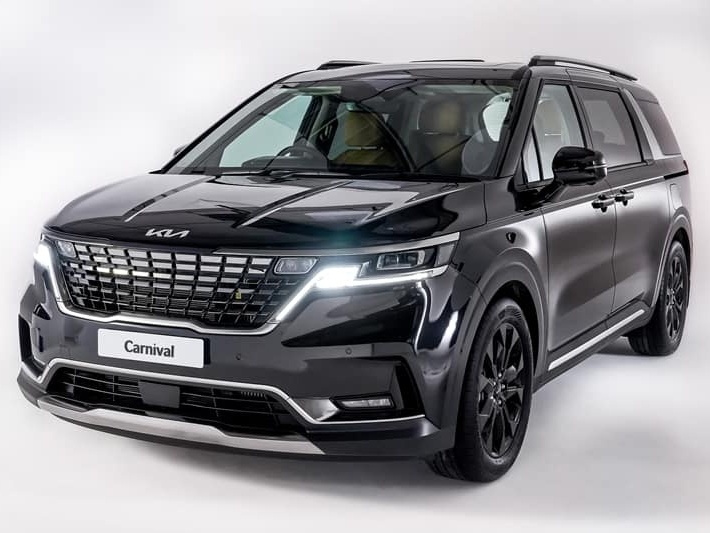
Kia Carnival: Spacious & Versatile for Every Journey
Kevin WongMay 19, 2025
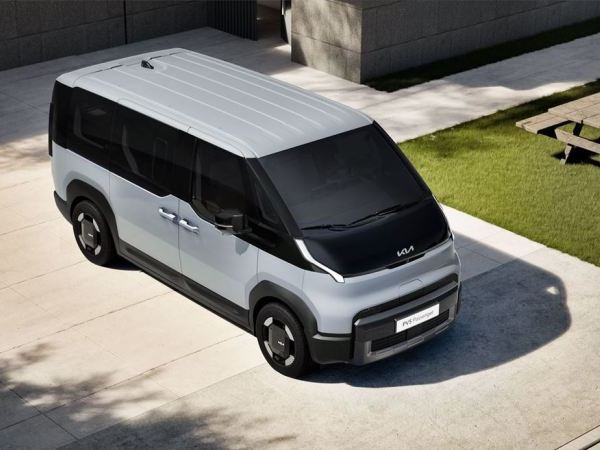
Kia reveals all details of PV5, with a maximum range of up to 400 kilometers
LienMar 11, 2025
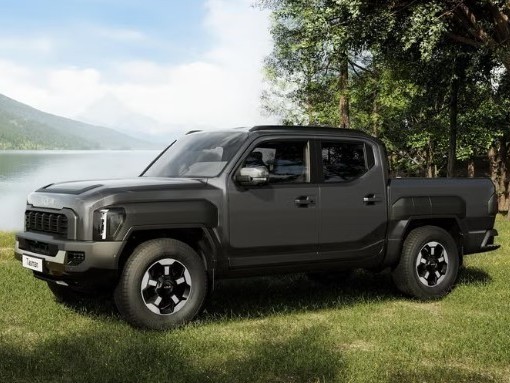
173L cargo box, 3500kg towing capacity, KIA Tasman meets all your needs!
MichaelOct 31, 2024
View More












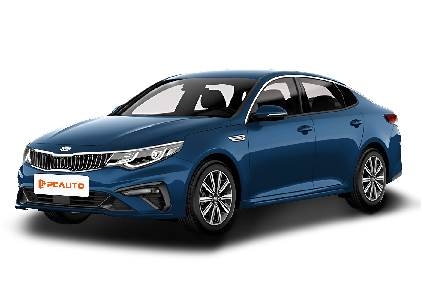
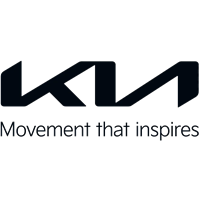 Cars
Cars




Pros
Cons